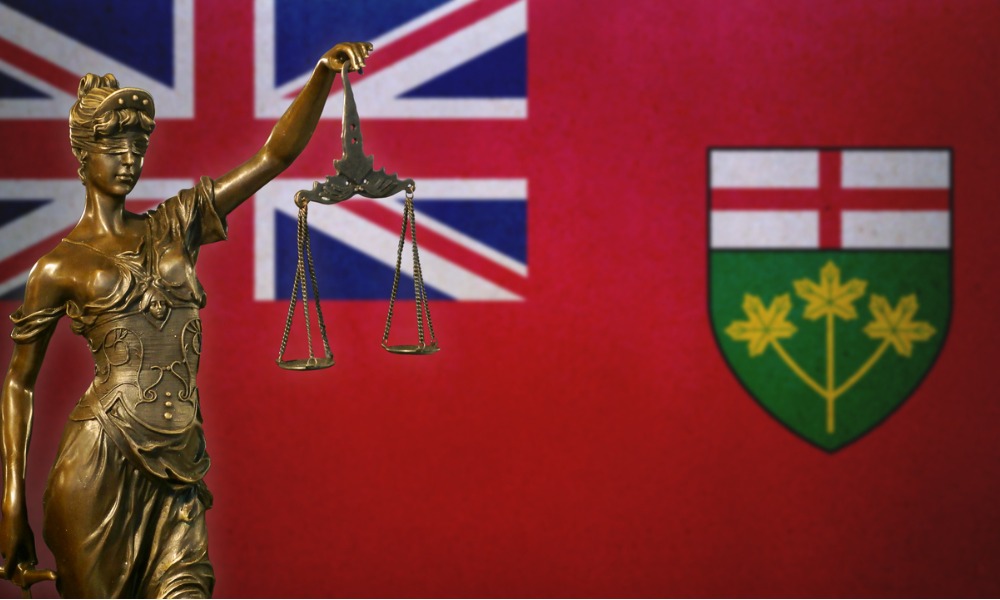A massive backlog of product licensing applications at the Natural Health Products Directorate at Health Canada is causing the industry some frustration as the first of two critical deadlines loom.
 Robert White, director of scientific and regulatory affairs for the industry group Consumer Health Products Canada (formerly NDMAC), says the backlog at Health Canada is a result of new regulations enacted in 2004 requiring the issuance of a licence of compliance.
Robert White, director of scientific and regulatory affairs for the industry group Consumer Health Products Canada (formerly NDMAC), says the backlog at Health Canada is a result of new regulations enacted in 2004 requiring the issuance of a licence of compliance.
The sector covers everything from sunscreens and pain relievers to vitamins and acne treatments.
Lewis Retik, a Gowling Lafleur Henderson LLP associate, says the backlog and generally slow process of getting a licence are creating frustration and uncertainty.
“They have products there from 2004 still waiting,” says Penelope Marrett, president and CEO of the Canadian Health Food Association. “It’s unacceptable.”
She says a recent missive from the NHPD defines the backlog as products submitted for licensing before April 1, 2008.
“What happens after that, if you submitted April 10, 2008?” she says. “Now we have a fore log too. Their own report from a couple of days ago on the status of submissions is dismal. Less than 50 per cent are completed - that is issues, refused, or withdrawn.”
Health Canada says it has received 39,102 product licence applications for natural health products, of which, 27,709 (71 per cent) have been completed.
The issue may be a question of definition, though, since the NHPD defines the backlog as the 12,635 product licence applications received before April 1, 2008, that were not completed (i.e. licensed, refused, or withdrawn) as of that date.
It says applications received on or after April 1, 2008, are considered regular workload and are not part of the backlog the NHPD has committed to addressing by March 31, 2010.
Further confusing things is the deadline of Dec. 31, 2009, at which time all applications will be subject to Health Canada’s full licence application process, which will take even longer.
Marrett says the uncertainty the backlog is creating in the market sector is worrisome.
“You can’t run a business like this,” she says, noting while no one wants unsafe products on the shelves, the vast majority of products submitted for licensing are known to be safe.
She says the organization has sent an outline of how best to cut the backlog and move things along and to the NHPD’s credit, it is reviewing the suggestions.
“All of a sudden, there are tens of thousands of products requiring licensing,” says Retik of the 2004 changeover. In addition, there was no transition period for most products.
That policy essentially allows companies to sell their products if there are no safety concerns and the products are not targeting children or breastfeeding women.
However, the policy also says Health Canada may decide to prosecute sellers at any time if they are not in compliance and haven’t received a licence even if their application has been made and is in the backlog.
The deadline for companies to have made submissions, if not having secured licensing, is Dec. 31, 2010, and the industry is concerned that at the current rate, applications will still be stuck in the backlog.
“It’s not that manufacturers want to sell unlicensed products. It’s that they don’t like the uncertainty the policy creates,” says Retik.
Companies are anxious about spending money on an idea to convert it into a product and a business only to find they may or may not be in compliance and may or may not be subject to enforcement, he says.
White says there are two streams under which companies can make their applications, and it’s the second stream in which the backlog seems to be worse.
“In the first stream, they can refer to the existing monogram which Health Canada has, which describes what ingredients are known and what claims can be made about them,” he says. “But in the second, if they don’t have a recipe and they can’t refer to the ingredients or claims in the existing monograms, it takes longer.”
He says Consumer Health Products has been working with Health Canada to figure out a more streamlined process, and more recently the government agency has added a web-based electronic submissions form that takes applicants through the process.
Some of the applicants aren’t helping things either, says White. In the case of paper submissions, some applicants have simply put forward the name of their product with no other information, just that more information will follow.
“They’re just trying to secure a place in line but the others who have submitted full documentation are saying that’s unfair,” he says.
Still, he says, no one is suggesting Health Canada lower its standards.
“We’re all pulling in the same direction,” says White. “We want Canadians to have access to safe products.”
 Robert White, director of scientific and regulatory affairs for the industry group Consumer Health Products Canada (formerly NDMAC), says the backlog at Health Canada is a result of new regulations enacted in 2004 requiring the issuance of a licence of compliance.
Robert White, director of scientific and regulatory affairs for the industry group Consumer Health Products Canada (formerly NDMAC), says the backlog at Health Canada is a result of new regulations enacted in 2004 requiring the issuance of a licence of compliance. The sector covers everything from sunscreens and pain relievers to vitamins and acne treatments.
Lewis Retik, a Gowling Lafleur Henderson LLP associate, says the backlog and generally slow process of getting a licence are creating frustration and uncertainty.
“They have products there from 2004 still waiting,” says Penelope Marrett, president and CEO of the Canadian Health Food Association. “It’s unacceptable.”
She says a recent missive from the NHPD defines the backlog as products submitted for licensing before April 1, 2008.
“What happens after that, if you submitted April 10, 2008?” she says. “Now we have a fore log too. Their own report from a couple of days ago on the status of submissions is dismal. Less than 50 per cent are completed - that is issues, refused, or withdrawn.”
Health Canada says it has received 39,102 product licence applications for natural health products, of which, 27,709 (71 per cent) have been completed.
The issue may be a question of definition, though, since the NHPD defines the backlog as the 12,635 product licence applications received before April 1, 2008, that were not completed (i.e. licensed, refused, or withdrawn) as of that date.
It says applications received on or after April 1, 2008, are considered regular workload and are not part of the backlog the NHPD has committed to addressing by March 31, 2010.
Further confusing things is the deadline of Dec. 31, 2009, at which time all applications will be subject to Health Canada’s full licence application process, which will take even longer.
Marrett says the uncertainty the backlog is creating in the market sector is worrisome.
“You can’t run a business like this,” she says, noting while no one wants unsafe products on the shelves, the vast majority of products submitted for licensing are known to be safe.
She says the organization has sent an outline of how best to cut the backlog and move things along and to the NHPD’s credit, it is reviewing the suggestions.
“All of a sudden, there are tens of thousands of products requiring licensing,” says Retik of the 2004 changeover. In addition, there was no transition period for most products.
That policy essentially allows companies to sell their products if there are no safety concerns and the products are not targeting children or breastfeeding women.
However, the policy also says Health Canada may decide to prosecute sellers at any time if they are not in compliance and haven’t received a licence even if their application has been made and is in the backlog.
The deadline for companies to have made submissions, if not having secured licensing, is Dec. 31, 2010, and the industry is concerned that at the current rate, applications will still be stuck in the backlog.
“It’s not that manufacturers want to sell unlicensed products. It’s that they don’t like the uncertainty the policy creates,” says Retik.
Companies are anxious about spending money on an idea to convert it into a product and a business only to find they may or may not be in compliance and may or may not be subject to enforcement, he says.
White says there are two streams under which companies can make their applications, and it’s the second stream in which the backlog seems to be worse.
“In the first stream, they can refer to the existing monogram which Health Canada has, which describes what ingredients are known and what claims can be made about them,” he says. “But in the second, if they don’t have a recipe and they can’t refer to the ingredients or claims in the existing monograms, it takes longer.”
He says Consumer Health Products has been working with Health Canada to figure out a more streamlined process, and more recently the government agency has added a web-based electronic submissions form that takes applicants through the process.
Some of the applicants aren’t helping things either, says White. In the case of paper submissions, some applicants have simply put forward the name of their product with no other information, just that more information will follow.
“They’re just trying to secure a place in line but the others who have submitted full documentation are saying that’s unfair,” he says.
Still, he says, no one is suggesting Health Canada lower its standards.
“We’re all pulling in the same direction,” says White. “We want Canadians to have access to safe products.”







